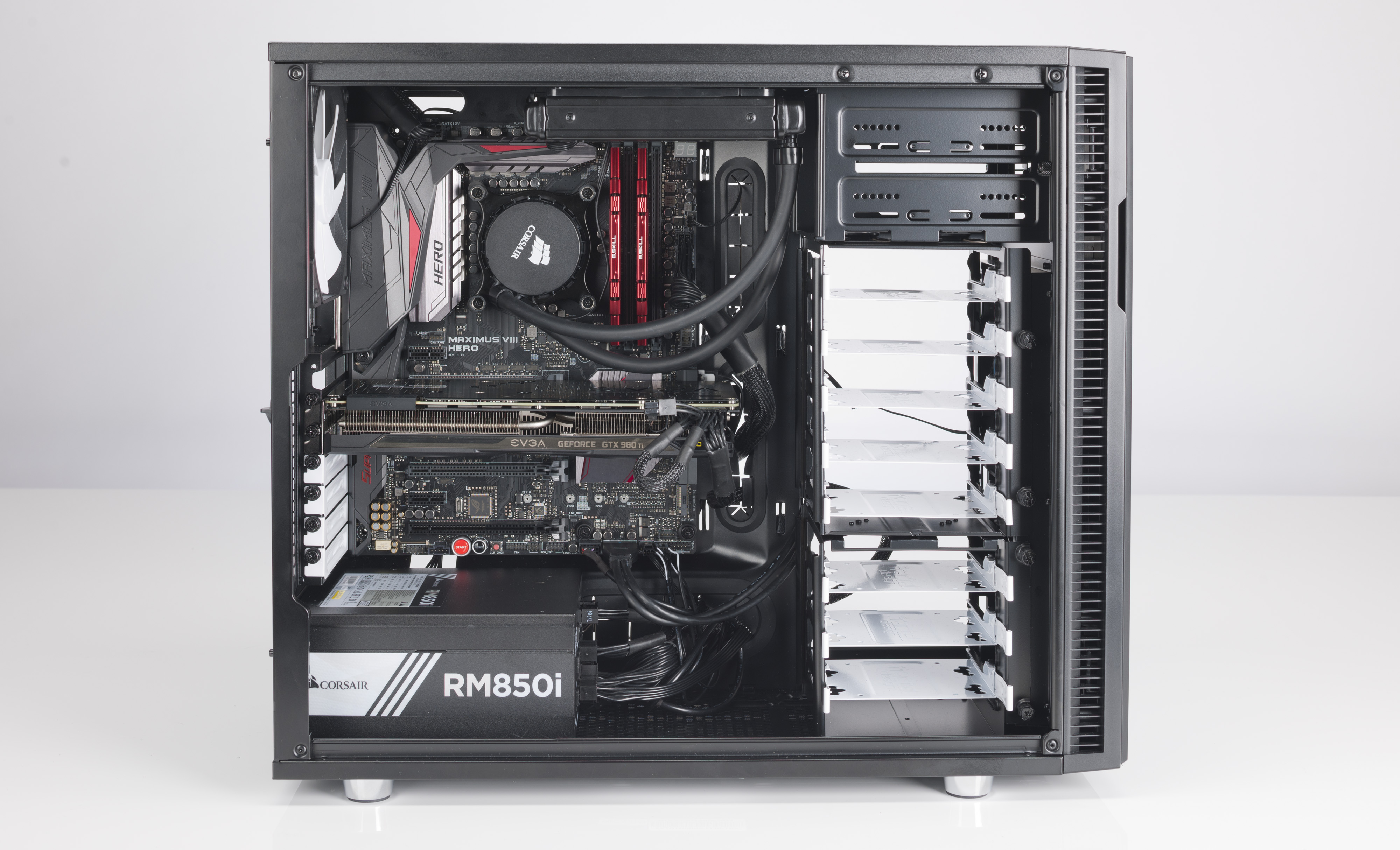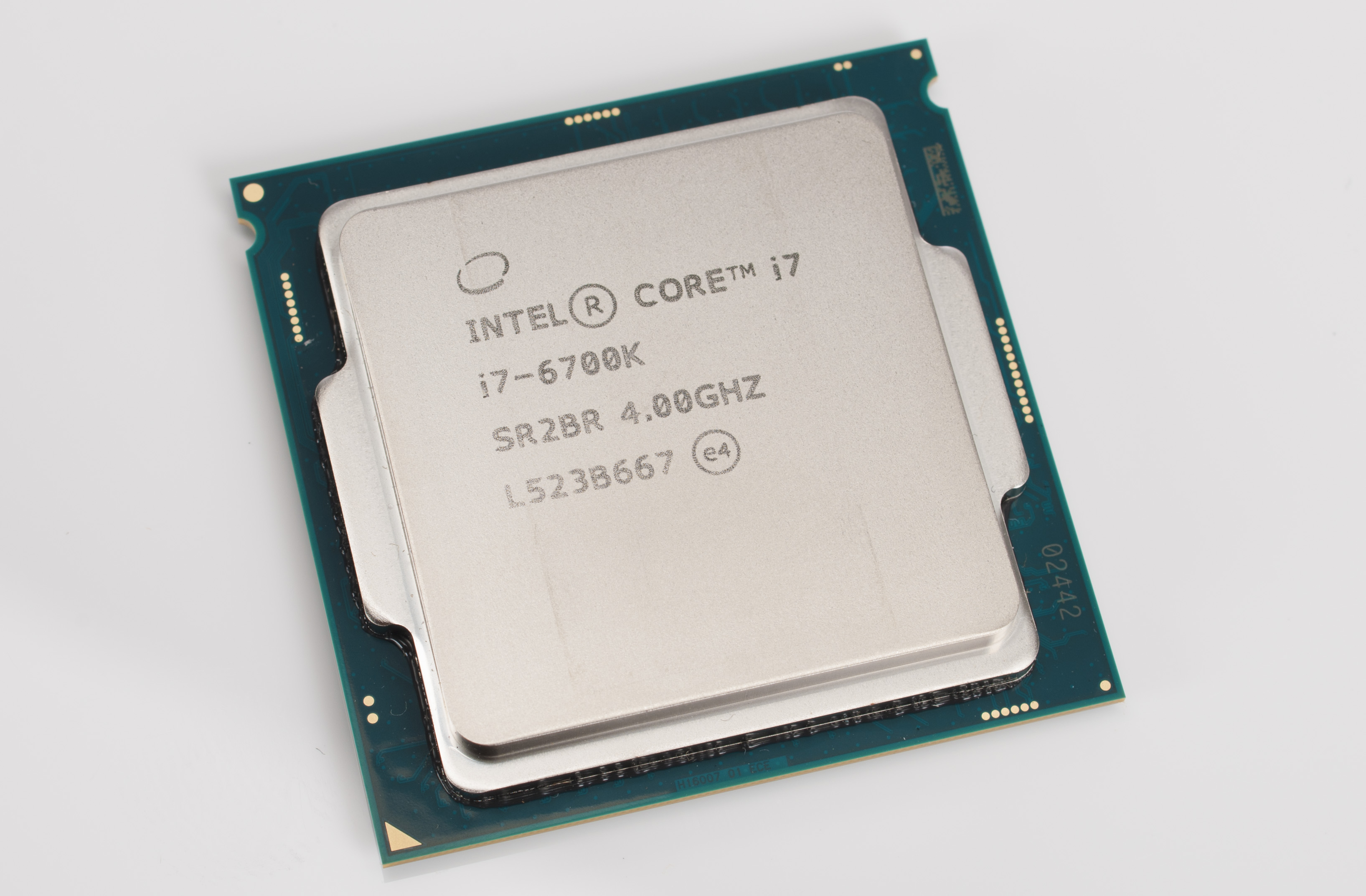Intel Skylake i7-6700K tested: a smart upgrade despite small gaming gains

If you’re building a brand new PC next week, next month or for the foreseeable future, Skylake is the platform you should be building on—but maybe not for the reasons you think. Intel is launching the i7-6700K ($350) and the i5-6600K ($243) today to much anticipation, but the new 14nm CPUs aren’t dramatically outshining or outperforming their predecessors. In fact, stacked up against a Haswell i7-4790K (the refresh Intel called Devil’s Canyon), the i7-6700K turned in gaming benchmark framerates only a few frames faster (and sometimes slower) than the older CPU. At best, we saw a 5 percent bump in gaming performance.
So why should you move to Skylake when you build a new gaming PC? It’s not a huge flashy upgrade, but it brings with it a new socket and a new chipset, Z170. And Z170 is what matters. The chipset adds some crucial additional bandwidth to support more PCIe lanes, more USB 3 ports, and modern solid state storage that’s outstripping the capabilities of SATA. It also supports faster DDR4 RAM, which is now far more affordable than it was in 2014 (16GB Corsair Vengeance LPX has dropped from $300 to $160 in less than a year).
Skylake’s going to be a good step forward for PC hardware, even if it’s not a giant leap for gaming.
Without taking a deep dive into Skylake’s architecture, let’s go over how some of those advances in technology will affect your next rig. Then we’ll tackle a difficult question: how old should your rig be to justify an upgrade to Skylake?
Skylake and the Z170 chipset
If you want to really dig into the technology of Skylake, check out the in-depth review from our colleagues over at Maximum PC, including some detailed direct performance comparisons. Thanks to Asus for providing a ROG Maximus VIII Hero motherboard for Skylake testing; it's a sleek and stylish motherboard with a great software set, USB 3.1 and x4 M.2 on-board.
Here’s a quick hit-list of significant features for Skylake and its new chipset:
— 16 PCIe lanes on the CPU and another 20 PCIe 3.0 lanes on the chipset. The latter is a big increase from the 8 PCIe 2.0 lanes on the last several chipsets.
Keep up to date with the most important stories and the best deals, as picked by the PC Gamer team.
— A new DMI 3.0 (Direct Media Interface) link between CPU and chipset, with double the effective bandwidth (32 gigabit/s) of DMI 2.0. This increases the throughput and effectiveness of those extra chipset PCIe lanes.
— Intel claims that very fast NVMe SSDs, which operate over PCIe, will achieve full performance over the chipset lanes (thanks to the bump up to PCIe 3.0), which means they won’t have to use the valuable CPU lanes that you want dedicated to your graphics card.

— Like the Devil’s Canyon i7-4790K and i5-4690K before them, these new Skylake 6700K and 6600K CPUs are built for overclocking. Their default clocks are already high at 4.0GHz and 3.5GHz, and able to overclock to a stable 4.7/4.6GHz, respectively, on a hefy air cooler.
— Support for DDR4 RAM. RAM speed has only a small performance impact on gaming framerates, but DDR3 is on the way out, and DDR4 prices are dropping fast. It’ll be the norm in the near future.
— More powerful RAM overclocking options. Most of us don't do any serious RAM overclocking, but the new processor is more flexible when it comes to tweaking ratios. Plus, speeds up to 4133. Yowza.
— While not built into the chipset, many Z170 motherboards are launching with USB 3.1 support, and many have USB 3.1 Type-C connectors. That’s great for future-proofing.
— Many Z170 boards are also building in M.2 ports with PCIe lanes as opposed to SATA express, which is great news for the future of high speed storage. We want to be able to take advantage of SSDs like the Samsung SM951.
— Integrated graphics performance is slightly better than Haswell, but not nearly as strong as Broadwell. For gamers, that’s mostly irrelevant, as we’ll always use a dedicated graphics card. But DX12 makes it possible for devs to leverage both GPUs, which could be a few frames of free performance in games.
Put all this stuff together, and you’ll see quite a few features that facilitate faster storage and memory and transferring data from one part of your PC to another. It may not be quite as sexy as a huge jump in CPU efficiency, but it’s all important. Sandy Bridge felt like the baseline for the past four years of processor development, and Skylake seems like it’ll fill the same shoes—it’s transitioned to DDR4 RAM, which will be the mainstream memory for several years, and built compatibility with the next few years of SSD advancements.

So, should you upgrade?
Like Nintendo games, Intel processors may age, but they rarely grow cheaper. When Intel releases a new line of processors, the older ones are phased out of the market and are no longer available for purchase new. Unless you’re deal hunting on eBay, you’re likely not going to pick up a year-old Intel CPU for cheap. That means you can either pick up a Haswell CPU for a limited time right now—at virtually the same price as Skylake—or move to the new platform. Unless you can get an absolute steal on a Z97 motherboard and DDR3 RAM, it simply makes sense to move to Skylake. If the PC you’re upgrading from is more than a year old, you’re going to need a new motherboard with a new socket, anyway.
Is it worth upgrading from Haswell/Devil’s Canyon? No. You’re looking at virtually no CPU performance increase on an investment of $500+ between processor, motherboard and RAM.
Is it worth upgrading from Ivy Bridge? Not really, at least not for gaming. Skylake gaming performance is only marginally better than Devil’s Canyon on average, and the bump from Ivy Bridge to Haswell delivered the standard 5-10 percent increase in overall performance. Remember that games are more often bottlenecked by the GPU, not the CPU. Gaming performance between the Haswell 4770K (2013) and Ivy Bridge 3770K (2012) is virtually identical across many games. M.2 SSD support is a point in favor of Skylake, but hardly worth the upgrade by itself at this point.
Is it worth upgrading from Sandy Bridge? Based purely on gaming framerates, again, no. You’re still only going to see a 5-10 percent increase in framerates with Skylake, even going back four years to the 2011 Sandy Bridge processors. But now we’re getting into territory where there are some other advantages.
Sandy Bridge was limited to DDR3-1333 (before overclocking), while Skylake supports much faster DDR4 RAM. M.2 SSD support is another point in Skylake’s favor. Sandy Bridge is also limited to PCIe 2.0, which has roughly half the throughput (500MB/s) of PCIe 3.0 (about 985 MB/s). PCIe 2.0 is still plenty fast for any single-GPU setup. For a dual-GPU setup with a cutting edge card, PCIe 3.0’s extra bandwidth may offer slightly better performance.
Is it worth upgrading from Nehalem? Hell yeah. That 2008 chip is ancient at this point: you’ll be running at far faster and more efficient base clocks, be able to overclock far more, and run far faster RAM. Circa-2008 boards also may be lacking USB 3.0 ports and SATA 6Gb/s, which modern SSDs are now fully saturating. Boy oh boy, are you ready for an upgrade.

Wrapping up
If your PC is younger than four years old, upgrading to Skylake isn’t going to have much of an impact on your gaming experience. Don’t be too eager to upgrade—for the cost of a new processor, motherboard, and RAM, you can buy a graphics card that’ll last years (and still have money left over).
That said, if you’re looking to build a gaming rig for the first time, or your first new PC in 4+ years, Skylake offers great performance and the biggest chipset upgrade in some time. It’s an easy choice. For gaming, we’d recommend the i5-4600K, which costs $107 less than the i7 and can overclock up to 4.6 GHz. That kind of speed, combined with the new chipset, will last you a long time.

Wes has been covering games and hardware for more than 10 years, first at tech sites like The Wirecutter and Tested before joining the PC Gamer team in 2014. Wes plays a little bit of everything, but he'll always jump at the chance to cover emulation and Japanese games.
When he's not obsessively optimizing and re-optimizing a tangle of conveyor belts in Satisfactory (it's really becoming a problem), he's probably playing a 20-year-old Final Fantasy or some opaque ASCII roguelike. With a focus on writing and editing features, he seeks out personal stories and in-depth histories from the corners of PC gaming and its niche communities. 50% pizza by volume (deep dish, to be specific).

